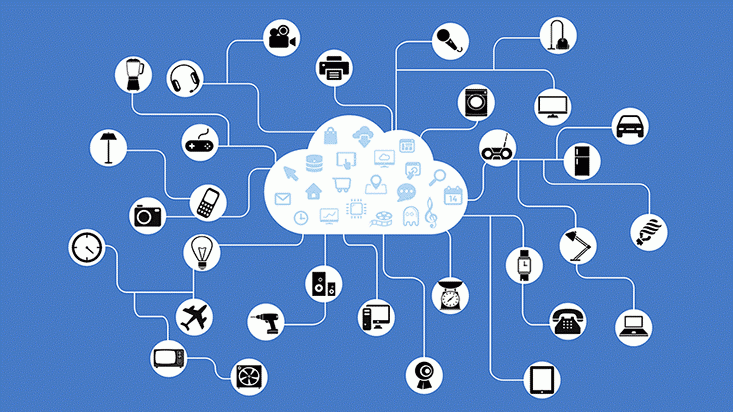The core of the Internet of Things lies in the deployment of sensors. Trillions of sensors are embedded in every corner. The collected data is intelligently analyzed using AI, making physical equipment vital. It can be said that small sensors drive digital change, allowing everything to be quantified. Enterprises have the ability to obtain unlimited data and gain insights from it to achieve rapid innovation. They can also drive the upgrading of the manufacturing industry. Even based on massive data, regions can gain insights into the future business economy.


Sensor deployment is the foundation of the Internet of Things
It has been more than 20 years since the Internet of Things was proposed, but the scale of sensor deployment has not been widespread, resulting in insufficient physical layers, resulting in insufficient data, and constraining industrial development from the source. Sensor deployment is the infrastructure of the Internet of Things. Many years ago, some countries proposed the trillion-sensor revolution, aiming to promote the use of 1 trillion sensors in social infrastructure and public services every year, and it is expected that 100 trillion sensors will be embedded in the Internet after 2030. Various places.
Hundreds of millions of sensors are embedded in every corner, including urban buildings, bridges, smart terminals, electricity meters, and industrial machines. Sensors connect people, machines, and data, allowing everything to be quantified, and factories can monitor machines in real time. operating status, improve production line operation, improve efficiency, and release potential. Sensors are deployed in every corner of the city, making it possible to continuously and dynamically collect, measure, analyze and optimize city operations, bringing new data-driven smart city comprehensive applications to make city operations truly “smart”.
In the process of autonomous driving business, sensors are the brains of autonomous vehicles. By deploying a series of sensor combinations, they can sense the surrounding environment and make autonomous driving a reality. A veteran of the Internet of Things pointed out: “Small sensors drive digital change, and factories bring about a new industrial revolution with digitalization as the background. From ubiquitous smart cameras to various sensors deployed in every corner of the city, we can monitor various aspects of the city. The data is collected and processed by cloud AI technology to help improve urban public management capabilities such as transportation and streets.”
Sensor technology has created a new era of smart cities to improve the city’s refined management capabilities. Intel gave an application case in an American city. San Diego deployed smart networks throughout the city to optimize traffic and parking systems and improve energy management systems. , San Diego Mayor Kevin Faulconer said that new technologies will give cities and developers the opportunity to build our communities safer and smarter.
Obtaining and leveraging data is the value of IoT
The core of the development of the Internet of Things lies in the deployment of sensors. Over the years, due to the widespread application of the Internet of Things, the sensor industry has ushered in huge development opportunities. Data shows that this year, the global sensor market is expected to reach 266 billion US dollars, especially the domestic growth is rapid.
With the rapid growth of sensor deployment and the vigorous development of the Internet of Things, the core of the generated data is to clarify the data and tap out the value, which provides a solid foundation for the development of the cloud platform. The cloud serves as a provider of data generated after various devices are connected to the Internet. Storage, management, analysis, etc. The core of the cloud platform is the data distribution center. Utilizing the data collected by the Internet of Everything will give birth to many innovative business models and applications, which is the cornerstone of the development of the Internet of Things industry.
Cloud service providers such as Amazon and Alibaba Cloud have integrated cloud, end, and equipment to share with the entire industry chain, helping enterprises achieve global IoT operations. Just because cloud computing can provide a powerful computing and processing platform for the massive data generated by the Internet of Things, it is the key to the development of the Internet of Things, and cloud service providers have taken the lead to seize the opportunity.
With the larger-scale deployment of sensors, the potential value of the collected big data will also be gradually explored. Data generation, collection, processing, decision-making and application can be said to be an industry driven by “data”. . That is, the massive data generated by the Internet of Everything is intelligently processed and analyzed, and finally products or services are formed through the data. This is the core business value of the Internet of Things and will also create more innovative business opportunities for society.
Various smart devices will serve as sensor carriers to achieve seamless interaction between humans, machines, and the cloud, allowing smart devices to possess “wisdom.” Especially when combined with artificial intelligence technology, the perception capabilities can be further supplemented and extended.
at last
Over the years, sensor deployment has grown rapidly. The number of institutions and investments engaged in sensor technology research and development has continued to increase. Sensor technology has also achieved rapid development. Of course, sensor deployment is not the ultimate goal. Obtaining data is where the value of the Internet of Things lies, and being in the Internet of Things cloud Platform + digital ecosystem manufacturers can quickly form a business closed loop from full-scenario driver to full-stack technology chain, then to the integration of supply and demand, and finally to the implementation of the industry. Therefore, manufacturers of IoT cloud platform + digital ecosystem will become the biggest beneficiaries of this wave of opportunities.